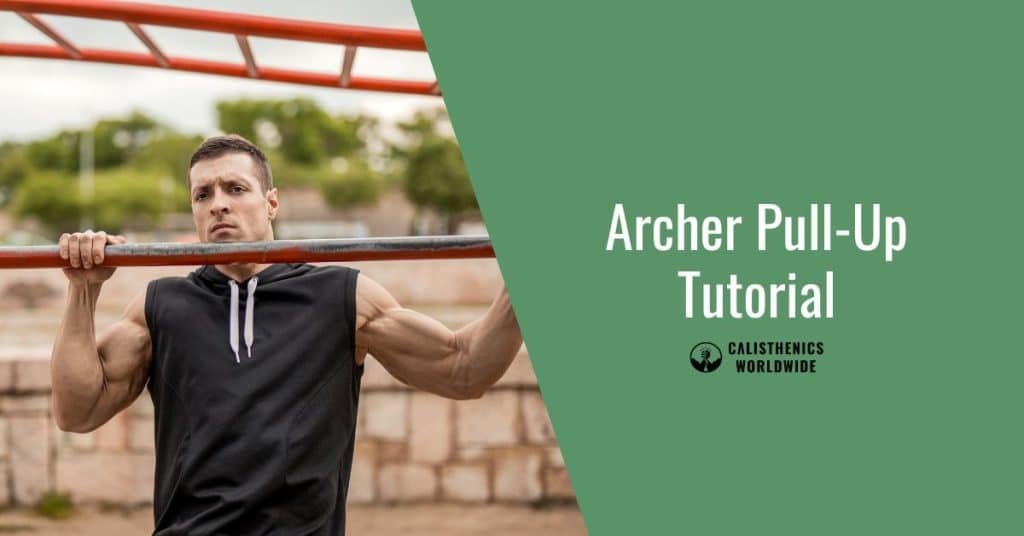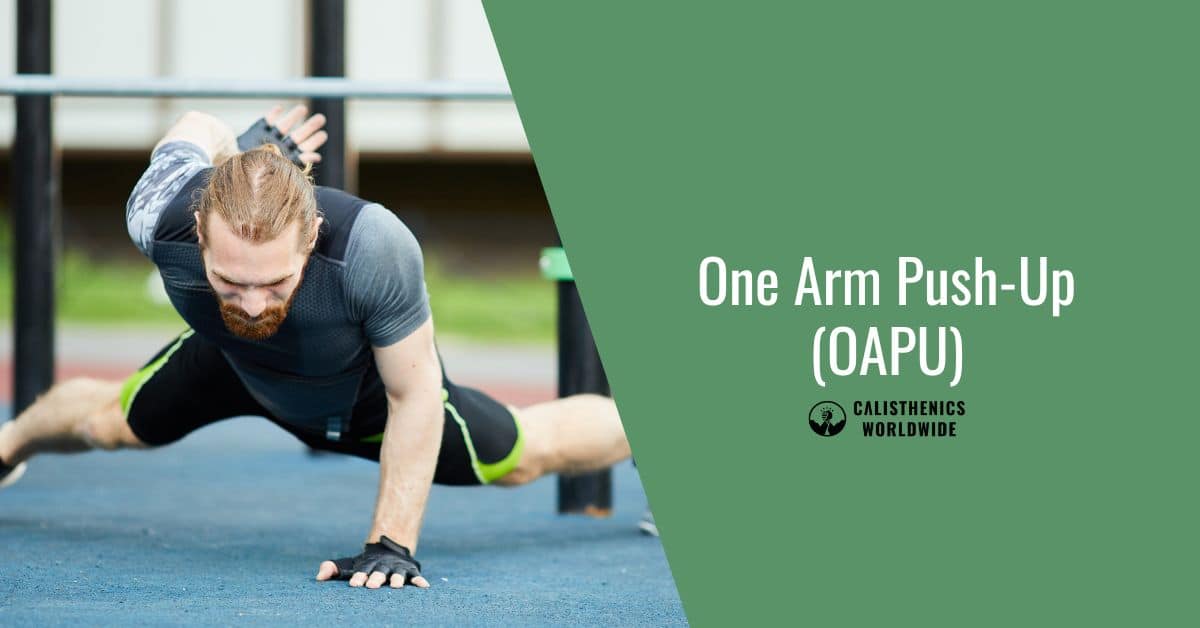The Archer Pull-Up is a dynamic and advanced Pull-Up technique in Calisthenics, in which you keep one arm straight and use the opposite arm to do most of the work. The exact technique is reminiscent of a One Arm Pull-Up except the straight arm is kept in contact with the bar and acts as a stabilizer and assist. Doing this Pull-Up technique has many benefits, as we will see, and there is a clear progression going from Pull-Ups to Archer Pull-ups that you can follow. We’ll explain how to perform a proper Archer Pull-Up, which muscles it exercises, the benefits and of course how you can progress to doing this advanced technique yourself and benefit from this great Calisthenics exercise.
What is an Archer Pull-Up
During the Archer Pull-Up, you pull up using one arm while keeping the other in contact with the bar. You achieve this by starting with a Wide Grip hold of the bar, bending one elbow and moving your chest towards that side, while straightening the other. This means that one side must do a lot more work to succeed, increasing resistance and hypertrophy. Once you reach the top of the bar, your arms and chest appear like an archer drawing a bow, hence the name.
As an advanced Pull-Up technique, it should be progressed towards gradually and then be part of your Pull-Up schedule. If you can’t do these Pull-Ups yet, we’ll explain how to progress to this point later in this article.
How To Do an Archer Pull-Up
Here is how to do this technique the proper way:
- Grab the straight top bar of your Pull-Up Bar with a Pronated Wide Grip.
- From the low position, pull up by bending the right arm and moving your chest towards the right hand holding the bar.
- Straighten the left arm, and slightly loosen your grip on the left if needed for your chest to reach and almost touch your right hand.
- Hold for 1 second, then return to the low position.
- Alternate right and left and repeat.
Pronated Wide Grip
Your knuckles face towards you, your fingers away from you. Your hands are spaced 1 to 2 hand widths wider than the width of your shoulders. You can go wider still but be sure you can touch your hand with your chest without having to slide the other hand closer.
Benefits of Archer Pull-Ups
- As a dynamic exercise, this technique increases your Range of Motion (ROM), resulting in better and more dynamic muscle activation.
- They are a steppingstone towards even more advanced Pull-Up techniques, including the One Arm Pull-Up.
- They are good for building a balanced, toned, masculine physique (the inverted triangle type).
Muscles Worked with Archer Pull-Ups
Archer Pull-Ups primarily target the latissimus dorsi (lats) on your back. The extra stretching and compressing motion results in stronger sides and back muscles, capable of doing even more advanced Pull-Up techniques. Aside from the latissimus dorsi, the biceps, forearms, shoulders and trapezoids are also engaged as well as other muscles in your back to a lesser degree.
This combination makes the exercise great for building that masculine figure as it brings out the triangular shape of a large, flared upper body down to your hips. Even after having progressed to even more advanced techniques, you should keep this one in your repertoire for sure.
Archer Pull-Up Progression
It is important to first properly prepare your body by training for the Pull-Up first and becoming proficient at it. Depending on where you are right now, the proper progression goes from left to right:
| Australian Pull-Up | Assisted Pull-Up | Proper Pull-Up | Wide Pull-Up | Archer Pull-Up |
Follow the links to each article for an in-depth explanation on how to master that stage. Once you’ve mastered it (the benchmarks will be explained in each article), progress to the next Pull-Up variation.
Mastering the Technique
Work up to the following benchmark:
- 3 sets of 12 Archer Pulls,
- 3x a week,
- For a month
Once You Master It
The next two stages of Pull-Up progression are:
| Typewriter Pull-Up | One Arm Pull-Up |
Calisthenics Equipment for Archer Pull-Ups
All you really need for any Pull-Up is a high bar. The best Pull-Up Bars are sturdy, durable and stable. This is important since the technique also involves movement parallel (side-to-side) to the bar. An alternative to buying your own Pull-Up Bar would be to sign up for a gym or visit a Calisthenics Park. In case you’re wondering, in most of our tutorial videos we use the Gravity Fitness Pull-Up Bar to do all our workouts effectively and safely.
Conclusions About the Archer Pull-Up
Doing Archer Pull-Ups is the most effective for building strong, pronounced lats and is an excellent workout to get that masculine inverted triangle shape for your upper body. It is an advanced workout that requires progression towards, first starting with learning how to do your first Pull-Up, then progressing to Wide Pull-Ups and finally the Archer Pull-Up itself. Going from there, the Calisthenics exercise is an important progression step towards the One Arm Push-Up, too.
You only need a stable, durable Pull-Up Bar for this exercise. Stability is key since you are introducing side-to-side movement, which not all Pull-Up Bars are designed to tolerate. We like using the Gravity Fitness Pull-Up Bar ourselves, but many other high-quality Pull-Up Bars are also well suited for this exercise.
Now you have the knowledge to start doing or progressing towards the dynamic, effective Archer Pull-Up.
Frequently Asked Questions
Here are a few more questions that need answering about this advanced Pull-Up technique in the Calisthenics community.
Yes, these Pull-Ups are a very good way to exercise your lats and create a larger Range of Motion for your Pull-Up technique. They also prepare you for even more advanced Pull-Up techniques like the Typewriter Pull-Up and the One Arm Pull-Up.
- Latissimus Dorsi (lats), the sides of your back muscles
- Shoulders
- Biceps
- Triceps
- Trapezoids
- Forearms






